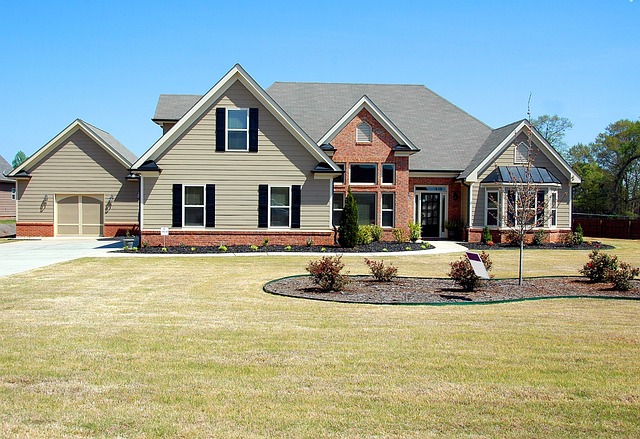How Much Is Your Home Worth? Complete Value Guide
Discover what influences your home's market value and learn practical ways to assess and enhance property worth. This guide covers the physical features that add value, how to monitor price changes via online tools and appraisals, which renovations deliver the best returns, and how market forces shape real estate pricing. Ideal for homeowners thinking of selling, refinancing, or investing in upgrades.

Key Features That Boost Property Value
A property’s market price reflects more than just location and square footage. Buyers and appraisers look at a combination of tangible features and condition. Key contributors include overall size, bedroom and bathroom counts, and the efficiency of the floor plan. Recent interior updates—like modern kitchens, refreshed bathrooms, and new flooring—make a home feel current and can significantly improve perceived value. Energy-efficient additions such as upgraded windows, insulation, and modern HVAC systems are increasingly desirable and can attract cost-conscious buyers.
Exterior appeal matters as well. Well-cared-for landscaping, clear curb appeal, and functional outdoor living spaces such as patios, decks, or gardens add to a home’s attractiveness. Structural integrity—roof condition, foundation health, and siding—also plays a central role in determining a property’s worth because these influence future maintenance costs for buyers.
Ways to Monitor Your Home’s Value
Homeowners have multiple tools at their disposal to stay informed about their home’s worth. Automated online valuation tools provide quick, ballpark estimates by analyzing recent sales and broad market trends. These instant estimates are useful for a snapshot, but they may miss unique property features or local nuances.
For a more precise picture, hire a licensed appraiser. Appraisals consider specific elements such as upgrades, lot size, and neighborhood comparables to produce an accurate valuation. Real estate agents can also offer comparative market analyses (CMAs) that synthesize current listings and recent closed sales in your immediate area.
Keeping an eye on nearby comparable sales, local inventory levels, and average days on market gives homeowners insight into short-term value trends. Regular check-ins—especially before major financial decisions like refinancing or listing—help ensure you’re working with the most current information.
Which Renovations Deliver the Best Returns
Not every improvement produces the same increase in resale price, so prioritizing projects is important. Traditionally, kitchen and bathroom remodels return a strong portion of their cost because these rooms heavily influence buyer decisions. Modern, functional kitchens and updated bathrooms often provide the highest ROI among interior projects.
Energy-saving upgrades are another smart investment. Installing efficient windows, smart thermostats, or a newer HVAC system can reduce utility bills and appeal to buyers looking for long-term savings. Cosmetic refreshes—fresh paint, new light fixtures, and updated hardware—can also modernize a space at relatively low cost.
Before starting any project, research local market expectations. Over-improving for your neighborhood can make it harder to recoup costs. Focus on improvements that align with comparable homes in your area to maximize value.
How Market Forces Shape Home Worth
Outside factors beyond an owner’s control can push values up or down. Broader economic indicators—interest rates, employment levels, and consumer confidence—directly affect buyer demand. Lower mortgage rates generally increase purchasing power and can lift home prices, while higher rates often cool the market.
Local influences are equally important. Zoning changes, new commercial developments, school district shifts, and infrastructure projects can alter desirability and long-term property values. Conversely, environmental risks like flood zones or nearby industrial changes may depress prices or limit marketability.
Natural disasters and climate-related concerns increasingly affect buyer perceptions and insurance costs, which in turn can influence valuation. Staying aware of regional planning and environmental trends helps homeowners anticipate potential value shifts.
| Improvement Type | Average Cost Range | Potential Value Increase |
|---|---|---|
| Kitchen Remodel | $15,000 - $50,000 | 5-15% of home value |
| Bathroom Update | $10,000 - $30,000 | 3-7% of home value |
| New Roof | $8,000 - $20,000 | 2-5% of home value |
| Landscaping | $3,000 - $15,000 | 1-5% of home value |
Prices, rates, or cost estimates mentioned in this article are based on the latest available information but may change over time. Independent research is advised before making financial decisions.
Putting It All Together: Practical Steps for Homeowners
Start by maintaining core systems and addressing obvious repairs; buyers notice deferred maintenance and may discount their offers accordingly. Use online tools for periodic checks, but schedule professional appraisals or agent CMAs when you need a reliable figure for selling, refinancing, or tax purposes.
When considering upgrades, prioritize projects that match local market expectations and offer measurable benefits—kitchens, bathrooms, and energy-efficient systems are typically sound bets. Keep documentation of improvements and receipts; a clear record of upgrades can support a higher asking price and simplify appraisal conversations.
Finally, stay informed about economic and neighborhood developments. Subscribe to local real estate reports, track comparable sales, and consult professionals when major changes occur. While some factors influencing home worth lie outside your control, consistent upkeep, smart investments, and timely market awareness will help you protect and potentially increase your property’s value over time.
Final Thoughts
Understanding what determines your home’s value empowers better financial decisions. By focusing on structural integrity, thoughtful updates, and ongoing market monitoring, homeowners can preserve and enhance property worth. Whether planning to sell soon or simply safeguarding an important asset, informed, strategic action pays dividends in the long run.






